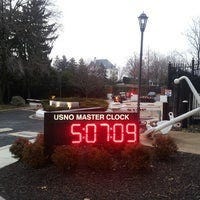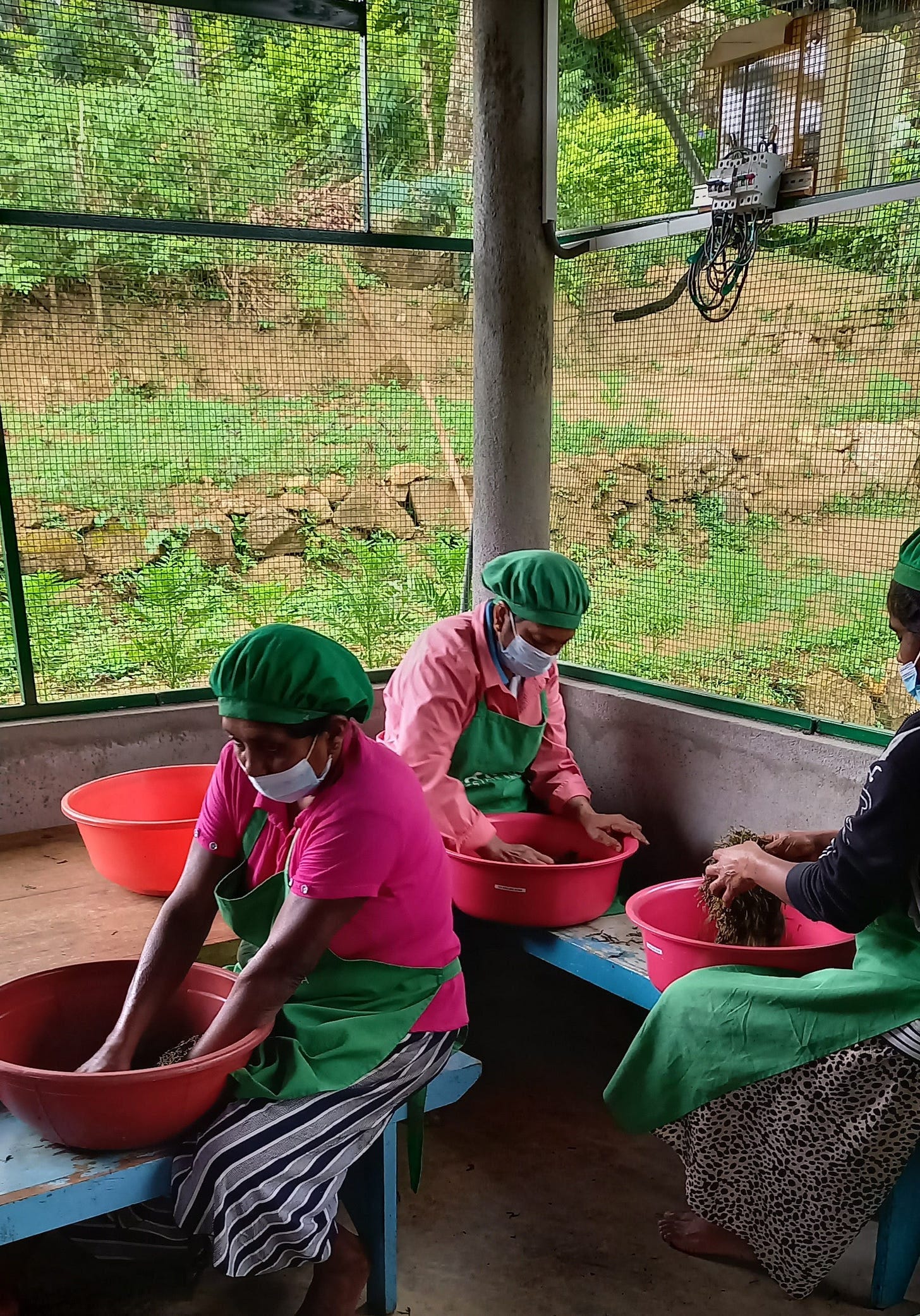Outside the grounds of the Naval Observatory in Washington DC, in which sits the Vice President’s house, is the world’s most accurate clock.
It’s the Master Clock, clicking over at dazzling speed, measuring the travel time of electromagnetic signals between satellites and Earth.
I’ve found a British equivalent - on the UK Tea & Infusions Association website. Scrolling unreadably fast, and reflecting the more terrestrial interests of the British, it records the number of cups of tea consumed in Britain “so far today”. How they could possibly know is beyond my grasp. When I took a look, the figure was rocketing at 33,094,948 and it was only just past breakfast time. The FAQs column contends Britons drink around 100 million cups daily.
The British enthusiasm for tea underscores an aspect of British colonialism of a far from admirable nature - how the nation stole the secret of tea from the Chinese, then turned tea pickers into meagrely paid workers living in miserable conditions.
Unlike tisanes, those dried floral or fruit compositions known incorrectly as tea (camomile tea, rooibos tea, hibiscus tea, and more), a tea leaf has no taste or smell and must go through several processes before it becomes scented and drinkable. So the mystery for the British was, how was this done?
Originally, it was the Dutch in the early 1600s who brought tea to London, where it took over from coffee houses as the latest craze. The impressive profits the Dutch made buying it from the Chinese and selling it on to the British didn’t sit well with the Brits. As its naval force grew, the British sought to by-pass the Dutch and buy direct from the Chinese.
The Chinese were willing to trade tea for silver. The British preferred instead to negotiate with opium, which was far cheaper and would create a market of addicts. Once the Chinese realised what was happening, they devised the Tea Wagon Road, going overland through Siberia, Russia, Germany, and on to the rest of Europe to sell their tea, while limiting the supplies they made available to the British. Since there were no longer any British products the Chinese wanted to buy, the British realised they would have to grow tea themselves. And resorted to skullduggery.
In 1848, Robert Fortune, a Scot, was commissioned by the British East India Company to crack China’s tea production secrets. But he also had to smuggle tea plants out of China. Since most of China was off-limits to foreigners, Fortune went undercover in the guise of teacher, and set out to the tea-growing areas.
It took him nine years to discover the tea-making process, and to pirate plants out to India, where camellia sinensis Assamian, a tea plant from the same family, already grew. To damage the market for Chinese tea, he spread the rumour that China’s green tea was coloured by arsenic and its young drinkers were sickening and dying from the build up of the poison.
As the Chinese market suffered, British tea production took off, and in the 19th century, was speeded up by the introduction of machines. Then the coffee crop in Ceylon (Sri Lanka), a British colony from 1815, was struck down by a fungal blight. It destroyed bushes across the country and the coffee trade slumped. To sustain local industry, tea plants to replace the coffee were introduced into Ceylon by another Scot, James Taylor.
Ceylon, it turned out, was perfect for growing tea. It has sun and rain in balanced measure, so that unlike anywhere else, tea leaf picking can take place all year round. Once machines, designed in Britain and able to process 6-10,000 kg of leaves a day, were also deployed (the same ones still in use today in some factories), the tea trade took off.
To keep up with demand, hundreds of British planters (including the famous Thomas Lipton) set up several tea factories and brought Tamil workers in from Southern India. They were poorly paid and poorly accommodated. Line rooms were created, rooms ten feet square set next door to one another in a single line that housed whole families.
The women would go out and pick tea, the men would cultivate and manage the land. The only diversion at the end of a day’s work was procreation, which provided another generation of what were essentially tea slaves, trained by their mothers. Although line rooms were officially abolished after Ceylon’s independence in 1948, Indian Tamils working on these plantations became legally defined as ‘temporary immigrants’ and were denied citizenship until the 1980s. Until the early 2000s, tea workers earned a basic wage of less than 100 Sri Lankan rupees per day, equivalent to less than a dollar per day - if they had collected at least 20 kg/40 lbs of tea leaves. That’s enough to make over 6,400 cups of tea. Despite the Regional Plantation Companies insisting any increase would destroy the tea industry, daily wages have gradually been pushed up to 1,000 rupees a day - £2.21/$2.73.
Before the mid-20th century, Sri Lanka was the world’s biggest exporter of tea. Yet although it can pick and process tea year round, these days it has slipped to No.4. China and India have always been the world’s biggest producers, but always consumed most of their tea domestically; in recent years both countries have significantly increased exports; and even Kenya has shot past Sri Lanka. Partly to blame is Sri Lankan independence, in 1948.
What it brought Sri Lankans was an education that introduced them to the possibility of a far better life than tea picking, which had no status, could provide. Also, post independence, the tea profession in Sri Lanka was never developed. These days, you won’t see young people in the tea fields.
It’s a completely different story at Amba Estate.
A 120 year-old tea plantation with guest houses in the central, unspoilt valley of Ambadandegama, it’s run as a social enterprise that benefits its workers. I’ve been staying there and eating far too many beguiling vegetarian curries made from vegetables grown in the estate’s organic garden or foraged up and down the paths leading to the river.
Amba was taken over in 2006 by four friends, all of whom work on economic and social development around the world, to create their own model social enterprise. They converted the estate to organic and started development of a range of handmade teas in 2010. Amba’s tea pickers don’t simply pick the leaves (in a process of rotation of fields that allows the bushes to recover), they take ownership of each step of production. It’s a process that can be tracked, from the finished packages proudly logged under their names and submitted to stringent quality control, right back to the exact bushes the leaves were picked from, who by, and when.

The rolling is a process of sorting -rejecting old, tough, or blemished leaves, that takes 2 to 3 hours. A factory machine will do the job in 30 minutes.
On top of their monthly salary, tea pickers are given a 10 percent share of the estate’s tea revenues. Around 500 kg of tea leaves are picked a month, with 100 kg for sale each month to over 30 countries. Even at these small numbers, Amba’s sustainable teas are profitable. Given Sri Lanka’s ideal weather and soil conditions, if other estates were to copy Amba’s example, Sri Lanka’s teas could rise again, along with respect for the profession of tea picking.
Like quality in everything, Amba tea doesn’t come cheap, unlike teabags from the big producers. But when next buying your tea, approach it as it deserves as if it were wine. Do you want plonk? Or a ‘terroir’ bottle thoughtfully produced with an interesting layer of flavours? Tea offers equally sophisticated choices. And how about a tea that supports a contented community - the waiting list to work at Amba is 200.
You might be also be persuaded to reconsider your tea choice by the fact that the word ‘dustbin’ (English for ‘trash can’) comes from the dust from crushed and pounded tea leaves left behind in the bin and a significant part of most teabags. And that colour that blooms from a teabag when you introduce boiling water? It’s not a natural orange from the dried leaf. It’s artificial colouring. Then the teabags. They are made from artificial material that releases microplastics. Even if you don’t buy Amba teas, renounce teabags and buy loose leaf tea.
A slice of Amba’s Butter Cake makes the perfect partner to Amba’s teas.
170g/6oz butter plus more for greasing
170g/6oz plain flour
170g/6oz golden caster or granulated sugar
3 eggs
1½ teaspoons vanilla extract
1½ teaspoons baking powder
Preheat the oven to 180C/350F.
Prepare the round cake tin by generously buttering the bottom and the sides. Cut a round of parchment paper, and place at the bottom of the cake tin; the butter should help this stick down easily. Butter the top of the parchment paper to prevent it from getting stuck to the cake.
Measure all of the ingredients into a large mixing bowl.
Use an electric mixer to mix well, and beat some air into the batter. This might take 5-10 minutes, but will result in light and fluffy texture. You could also use a spoon to fold the mixture together, though this will take a little longer. Scrape the sides of the bowl occasionally in between mixing, to ensure everything is well-combined. The batter should be smooth, and pale yellow in colour. You’re aiming for a light dropping consistency.
Transfer the batter to the lined cake tin, scraping as much as you can out of the mixing bowl. Firmly tap the cake tin against a flat surface, which will level the top off.
Bake for 40 minutes, or until it has risen and has turned golden brown in colour.
Allow to cool completely before removing from the tin. For this, place a large plate on top of the tin, and then turn both upside down. Lift the tin off of the plate, and then peel off the parchment paper.
Slice into generous pieces.












This is a wonderful article.
Julia, one question: how do opium and the Opium Wars fit into this story? I'm curious at their absence but perhaps I have my Sino-British history mixed up.